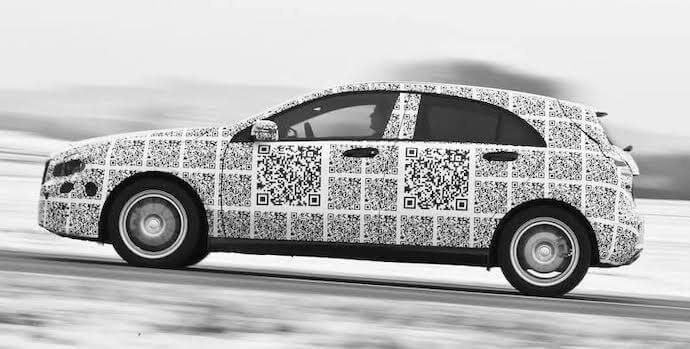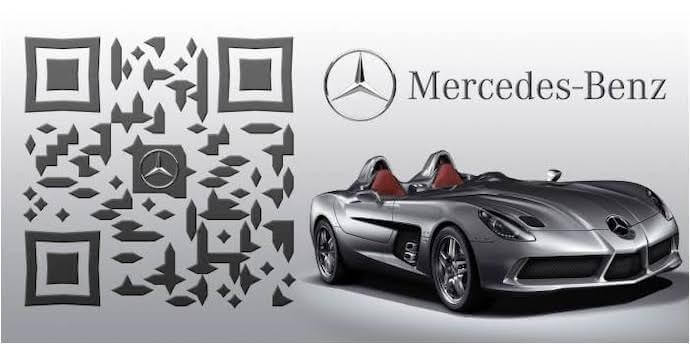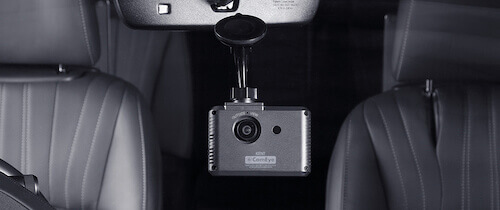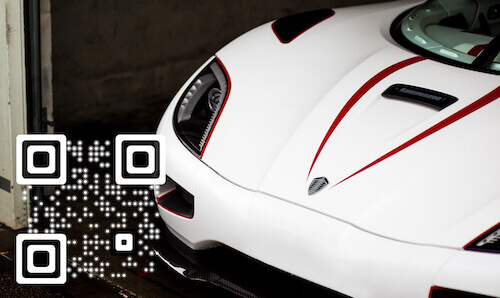You know what QR Codes are. Just like barcodes, they store information. But they are a step ahead of traditional barcodes. How?
QR Codes are not limited to storing text-based and limited information. They can even store multimedia content and up to 7,089 characters.
Hence, they allow you to:
1. Ensure safety: Wondering how? They are already being used to make the environment, construction sites, and even food safer in many ways
2. Make your organization’s processes better: With QR Codes, you can make operations such as receiving payments and tracking attendance easier
3. Boost your conversions: This is one of the most popular use cases of QR Codes. Hence, many marketers today use them in their print media campaigns. QR Codes make it easier for end-users to take action. For example—visiting a website, watching a video, and signing up for an event
And they even help you gauge your conversions by granting you access to their scanning activity.
Due to such diverse use cases, many industries are now using QR Codes for various purposes. Some of these industries include—architecture, print media, software, gifts, non-profits, TV, consumer electronics, and insurance.
In this article, you will see how QR Codes are being used in the automobile industry in six different ways:

1. To keep a track of inventory
Inventory tracking is actually what QR Codes were invented for. In 1994, Denso Wave corporation developed QR Codes to track automobile parts during the manufacturing process.
They were developed to overcome the limitations of barcodes in the following ways:
a. Higher information storage capacity: A QR Code can store 7,089 characters which is much more than what a barcode can store
b. Fast and 360-degrees scannability: Unlike a barcode which is unidirectional, a QR Code can be scanned from any angle. And the speed of scannability is greater than that of a barcode
c. Up to 30% damage resistance: QR Codes can sustain up to 30% damage. That means they remain scannable even if they are damaged. And this makes them well-suited for industrial environments
d. Smaller size: A QR Code can store much more information than a barcode of similar size
2. To ensure safety during accidents
Whenever a crash happens on the road, the first thing to be ensured is—passenger safety. Hence, cutting through the vehicle to evacuate passengers is the first thing that a rescue team rushes for.
But every automobile is different. And so is the location of essentials such as electrical set-up, fuel tank, and airbags. Knowing these locations is important to reach the passenger safely. But it’s practically not possible to know the design of each vehicle.
To curb this problem, Mercedes Benz—a German automobile manufacturer—came up with a solution. It added a QR Code on each car’s B-pillar and fuel door.

As the rescue team arrives, a member can scan the QR Code to know the location of the entire set-up. Hence, they do not need to waste precious time looking for the set-up. They simply need to choose the safest area to cut-in and reach the passenger.
3. To sell your vehicle smoothly
Say you deal in cars and get many potential customers in your showroom every day. They check out the cars and ask you for their specifications.
Here you can use a QR Code to do two things:
First, you can create a QR Code for each one of the vehicles. And place it near the concerned automobile.
When scanned, this QR Code can take the user to a webpage with detailed information, or an image gallery, or a video, or an infographic. Or it can even lead to a landing page with all the content needed.
Second, it can also bring up a pop-up where the user needs to enter his information (such as name and contact number). As he submits this information, he can access the encoded details.
It will help you generate leads and do regular follow-ups to increase the chances of a sale.
A Honda dealer in Beaverton, United States, used QR Codes to do the same. And started getting leads soon. Collaborating with an automotive software development company can further enhance this tracking capability by integrating advanced software solutions, making the inventory management process even more efficient and reliable.
4. To identify and secure car components
According to the FBI, motor vehicle theft accounted for about $6 Billion in 2018. And as per the industry experts, thieves keep coming up with new ways to steal automobiles. Hence, it becomes important to secure your vehicles.
And to do it, the Road Transport Ministry of India is planning on using QR Codes. They will add a QR Code on every part of each new vehicle from Oct 2019. Wondering—what will that do?
This QR Code will not be visible in general. To visualize it, you’ll have to irradiate it with UV light. When scanned, the QR Code will reveal the vehicle’s engine and chassis number. These details will then help the Transport Department use their vehicle software to track the owner.
5. To authenticate vehicle insurance policy
You know that insurance is important for your vehicle. It helps cover your expenses in case of an accident or a theft.
Hence, governments around the world advocate people on getting their vehicles insured.
And to assist in authentication of an insurance policy, many automobile insurances now use QR Codes.
This QR code, when scanned, helps the authorized personnel identify if the insurance is genuine.
To do it, the Insurance Regulatory and developmental Authority of India (IRDAI), took a similar step. They added QR Codes on all the automobile insurance policies. IRDAI said:
“All the policies issued shall essentially contain a Quick Response Code. This QR Code would be used to verify the authenticity of the electronic policy.”
Telangana was the first state in India to adopt QR Codes for its automobile insurances.
6. To prevent the misuse of your vehicle
If you have a chauffeur-driven car, it’s safety and security are one of your major concerns. Of course, you will hire a driver after a thorough inspection. Yet, it’s important to keep an eye on what goes on inside the car in your absence.
To guarantee automobile safety in such cases, Kent RO Systems introduced Kent CamEye.

It is a do-it-yourself installation for automobiles. Wondering—what it does? It helps you monitor activities such as rash driving, over-speeding, and passenger safety.
And to do it, it uses a QR Code. It is a camera-based device that makes use of a QR Code to notify you about your automobile. That means you have both audio and visual access to your vehicle all the time.
All that you need to do is—download the KENT CamEye app and open it to scan the QR Code on the device. Next, place/anchor the device inside your vehicle and power it up. It will also notify you each time the car reaches or exits a location.
These are six ways how the automobile industry is using QR Codes. From tracking the parts of a vehicle to preventing thefts, QR Codes do it all.
How to create a QR Code
Planning on using QR Codes for one of your use cases? Get started with creating a QR Code. All that you’d need is—a QR Code generator. And to make it easier to find one, online here is a detailed comparison chart of the top ones available.
Once you decide on a QR Code generator, go ahead to create a QR Code. Just choose the appropriate QR Code category, add the information to be encoded, add design to it (optional), and export the image. That’s it.
Here’s a detailed guide on how to create a QR Code.
Also, in case you’d like to explore the utility of QR Codes in automotive marketing, here’s a detailed guide.
[cta1 caption=”Create QR Code for your automobile use case” content=”Create a visually-appealing and dynamic QR Code.” buttontext=”Create QR Code now” destination=”https://scanova.io/design-qr-code-generator.html?utm_source=yt_sd_qr-codes-automobiles_bod&utm_medium=blog&utm_campaign=content#/chooseqr/” image=”https://scanova.io/blog/wp-content/uploads/2016/12/qrcode-8.png”]Still have any queries? Ask them in the comments.
{ “@context”: “http://schema.org”, “@type”: “VideoObject”, “name”: “Inventory Management With QR Codes: A New-Age Approach”, “description”: “In this video, learn how QR Codes can help make inventory management better ad how to create these QR Codes in bulk. Links mentioned in the video: – QR Batch website: http://bit.ly/2wrz6e8 – QR Codes for inventory (article): http://bit.ly/2x5c7Gl – How to create QR Codes in bulk: https://youtu.be/f4ZiOIGEdNc – Text QR Codes: http://bit.ly/2wpvxoO – Serial Code QR Codes: https://youtu.be/QzvAwzUqXpU About the video: You would have seen barcodes on products and shipments. These are usually to track inventory. But barcodes have many drawbacks. First, they store limited information and occupy large space. Second, factory environments involve wear and tear. And once damaged, barcodes don’t scan well. Third, barcodes can only be scanned from one direction. QR Codes are advance level barcodes that overcome all these challenges. Hence, they’re now being used to manage inventory widely. Watch the video to know more. If you have any queries, let us know in the comments. If you find the video helpful, hit the like button and subscribe to our channel.”, “thumbnailUrl”: “https://i.ytimg.com/vi/BQIjVMIH6-c/default.jpg”, “uploadDate”: “2020-03-20T08:30:05Z”, “duration”: “PT1M34S”, “embedUrl”: “https://www.youtube.com/embed/BQIjVMIH6-c”, “interactionCount”: “32371” }